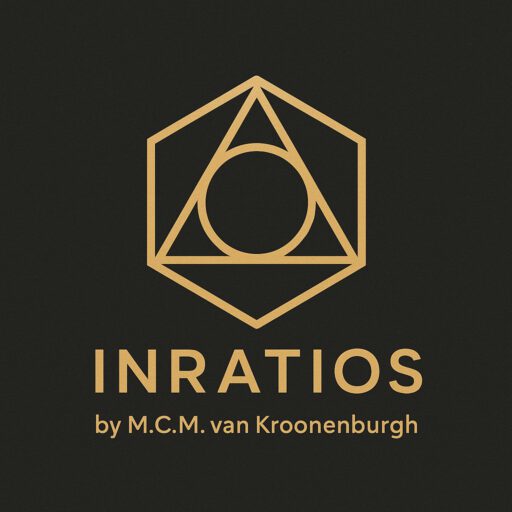The Power of 0.7854 – When Circles Align with Squares
Why fixed proportions offer more than infinite constants.
From drawing to defining
We tend to think of π as the most natural way to describe a circle.
And when you’re drawing one, that might be true.
A center point, a radius, a sweep of motion.
But when you need to calculate, compare, or quantify,
π suddenly becomes less helpful.
It’s infinite. It’s irrational.
And it ties every measurement to the curve, not to the structure around it.
In practice, we rarely use π itself.
We use approximations. 3.14, 22/7, (or in digital tools) just enough digits to get by.
But that’s not the issue.
The real shift comes when we stop building circles from curves,
and start seeing them as contained proportions.
GRM doesn’t just redraw the circle.
It redefines how we measure it, not from its radius, but from its boundaries.
A circle that’s perfectly inscribed in a square
will always take up 78.54% of its area and perimeter.
That’s 0.7854, a constant ratio.
And in GRM, that ratio isn’t an approximation of something else.
It’s the structural identity of a circle.
This number is not about rounding.
It’s about rethinking.
Ratio as identity, not approximation
In classical geometry, 0.7854 is just π divided by 4.
A shortcut. A convenient step in a longer formula.
Useful, but secondary.
But in the Geometric Ratio Model,
0.7854 is no longer a result.
It’s a starting point.
If a square is defined as 1 SAU (Square Area Unit),
then a perfectly inscribed circle is always 0.7854 SAU.
Not estimated. Not computed.
Just observed, as a fixed ratio.
The same goes for perimeter:
1 SPU for the square, and 0.7854 SPU for the circle inside it.
In classical geometry, radius and π are inseparable.
π only appears in formulas that rely on r.
It’s how we compute length (2πr) and area (πr²).
The radius becomes the gateway to everything else.But in GRM, that dependency disappears.
Instead of starting from r, we start from the bounding square.
And remarkably, the same circle — perfectly inscribed —
always covers exactly 78.54% of that square’s perimeter and area.This means we no longer need π or radius to define a circle.
We only need the square —
and the ratio that the circle occupies within it.This isn’t rounding.
This is ratio as identity, a new way to define a shape.
It means that a circle can be described not by what it tries to reach (π),
but by how much of its container it always occupies.
This reframing changes more than just how we calculate.
It opens the door to something deeper:
a system where geometry becomes proportional logic.
With GRM, 0.7854 becomes the conversion factor between structural form and classical geometry.
It acts as a bridge, letting us interpret shapes not through irrational constants,
but through consistent, fixed proportions.
And that bridge is more than just useful.
It’s transformative.
Because once you define a shape by its structure,
you no longer need to guess what it is.
You can measure it, compare it, and classify it; directly.
This turns 0.7854 into more than a number.
It becomes a standard.
A reference value that can inform not only geometry,
but the very logic of systems that simulate the physical world.
From surface to system
A square and a circle.
Two of the most fundamental shapes in geometry;
and yet, when viewed through proportion, they reveal something new.
That 0.7854 isn’t a coincidence.
It’s a pattern.
And patterns matter.
Because in digital environments, patterns are how systems understand the world.
What starts as a ratio between area and containment,
quickly becomes a method for classifying shapes,
measuring consistency,
and even estimating volume,
without relying on infinite constants or physical displacement.
In that light, π was never the final answer.
It was a tool. A step. A beautiful bridge,
that GRM now replaces with a direct connection between shape and structure.
This is where GRM begins to evolve,
from geometry to volumetrics,
from shapes on a screen to rules that define structure.
It’s not just a way to draw a circle anymore.
It’s the seed of a digital physics,
where structure, proportion, and meaning are tightly aligned.
And tomorrow, we take that further.
We’ll explore what emerges when we no longer rely on radius or π,
and how measurement becomes more direct, visual, and consistent.
Up next: Ratio Over Radius – The Logic Behind π-Free Measurement
Stay curious.

